Table of Contents
Introduction
Launching an online store has never been more accessible—or more complex. With countless platforms available, two names consistently rise to the top: Shopify and WordPress
Shopify and WordPress both offer strong e-commerce tools, but serve different needs—Shopify is a fully hosted, user-friendly option ideal for quick setup and low maintenance, while WordPress with WooCommerce is best for those seeking customization and greater control.
Shopify: An Overview
The word that comes up a lot for Shopify is simplicity. The interface is easy to set up and manage. When you need assistance, you can call customer service and speak to someone who will help you through the process.
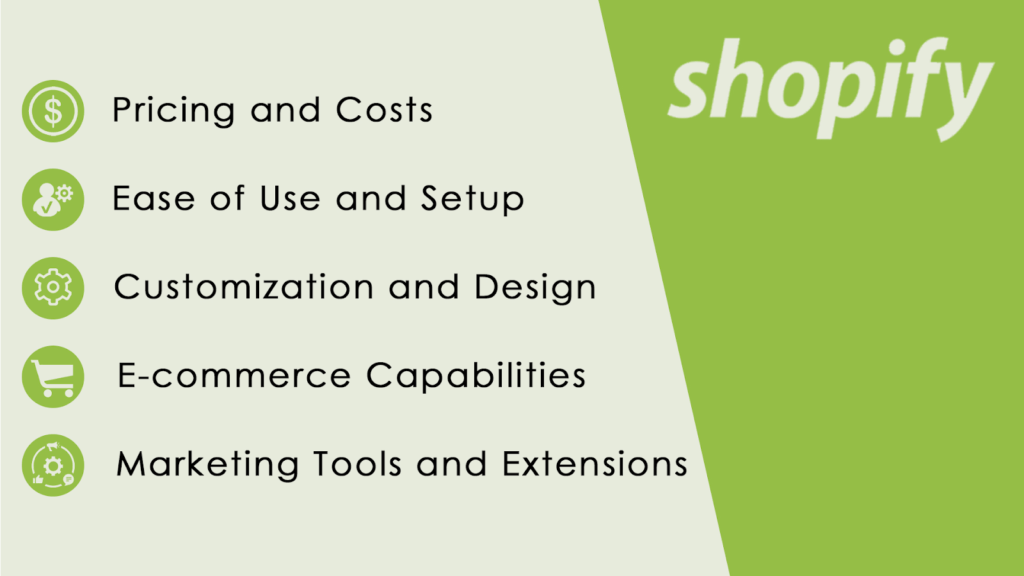
- Pricing and Costs: Shopify uses a subscription-based pricing model with fixed monthly plans. While the base cost is predictable, additional fees for premium themes, apps, and transaction fees can add up depending on your store’s complexity and scale.
- Ease of Use and Setup: Shopify is built for ease of use. It offers a quick setup process, intuitive drag-and-drop editing, and a user-friendly interface. It’s ideal for beginners or non-technical users who want to get started quickly.
- Customization and Design: Shopify provides a wide range of professionally designed themes, both free and paid. While it’s not as customizable as WordPress, it allows for moderate design control and offers access to the code for more advanced customization.
- E-commerce Capabilities: Shopify is a fully integrated e-commerce platform. All essential store features like product listings, inventory, checkout, shipping, and tax settings are built-in and work out of the box.
- Marketing Tools and Extensions: Shopify includes built-in marketing tools like discount codes, abandoned cart recovery, and integration with Google and Facebook ads. Additional marketing features can be added through the Shopify App Store.
WordPress: An Overview
As mentioned above, WordPress can be used to create a website, blog, portfolio, or e-commerce site. The platform handles up to 29% of the web. So it’s a well-known and widely used tool around the world. It’s easy to create a website on WordPress, and you have access to many themes for small or large businesses.
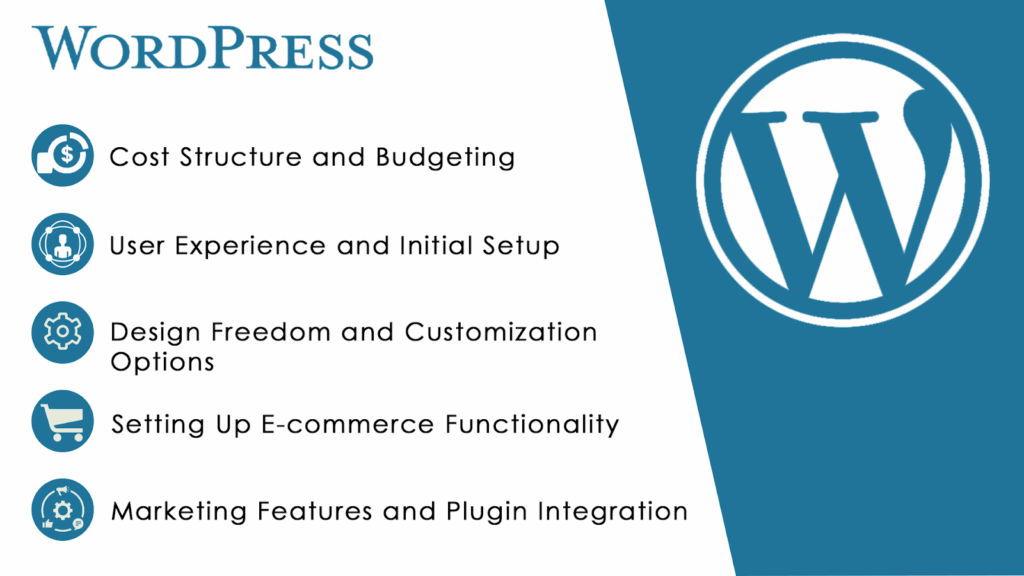
- Cost Structure and Budgeting: WordPress itself is free, but you’ll need to pay for web hosting, a domain name, and any premium themes or plugins you choose to use. This setup allows for flexibility in budgeting, but can lead to unpredictable costs as your site grows.
- User Experience and Initial Setup: WordPress is not a plug-and-play platform. It requires a bit of technical know-how to install, and configure plugins (like WooCommerce), and manage updates. It’s better suited for users who are comfortable with a more hands-on approach.
- Design Freedom and Customization Options: WordPress offers unlimited customization options through themes, custom code, and page builders like Elementor or Gutenberg. However, achieving advanced designs can be more complex and may require development skills.
- Setting Up E-commerce Functionality: WordPress doesn’t have built-in e-commerce. You’ll need to install WooCommerce or another plugin to sell products. WooCommerce turns your WordPress site into a powerful store with customizable features, but the setup is manual.
- Marketing Features and Plugin Integration: Marketing tools like upsells, email opt-ins, and automation are available through plugins and integrations (e.g., Mailchimp, HubSpot, MonsterInsights). This gives you flexibility but requires configuration.
Comparison of Shopify and WordPress
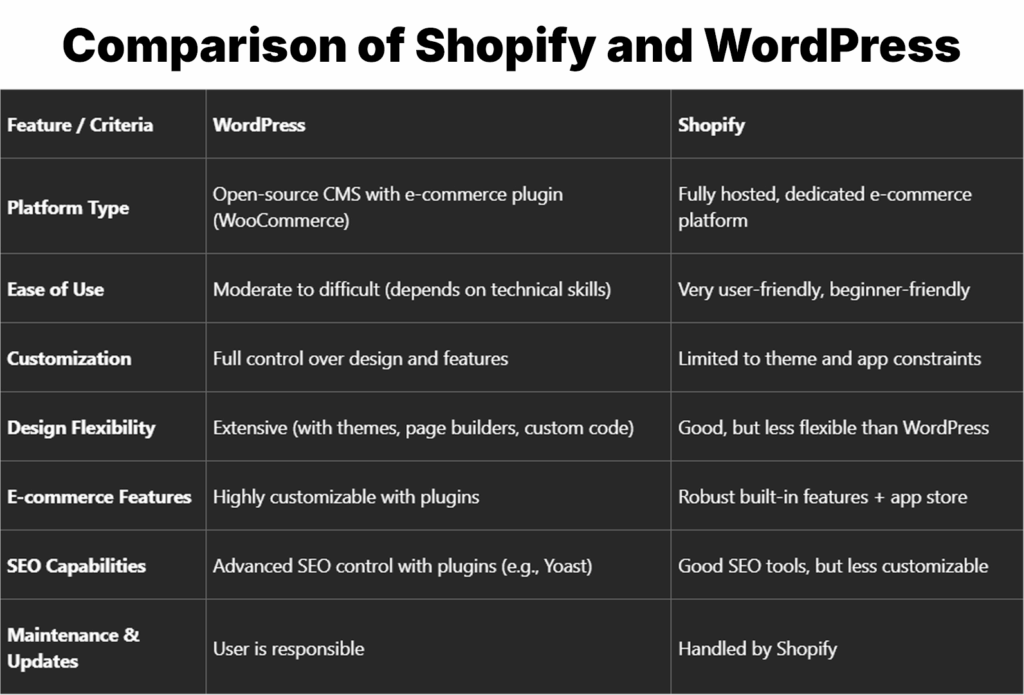
Design & Customization Option
WordPress
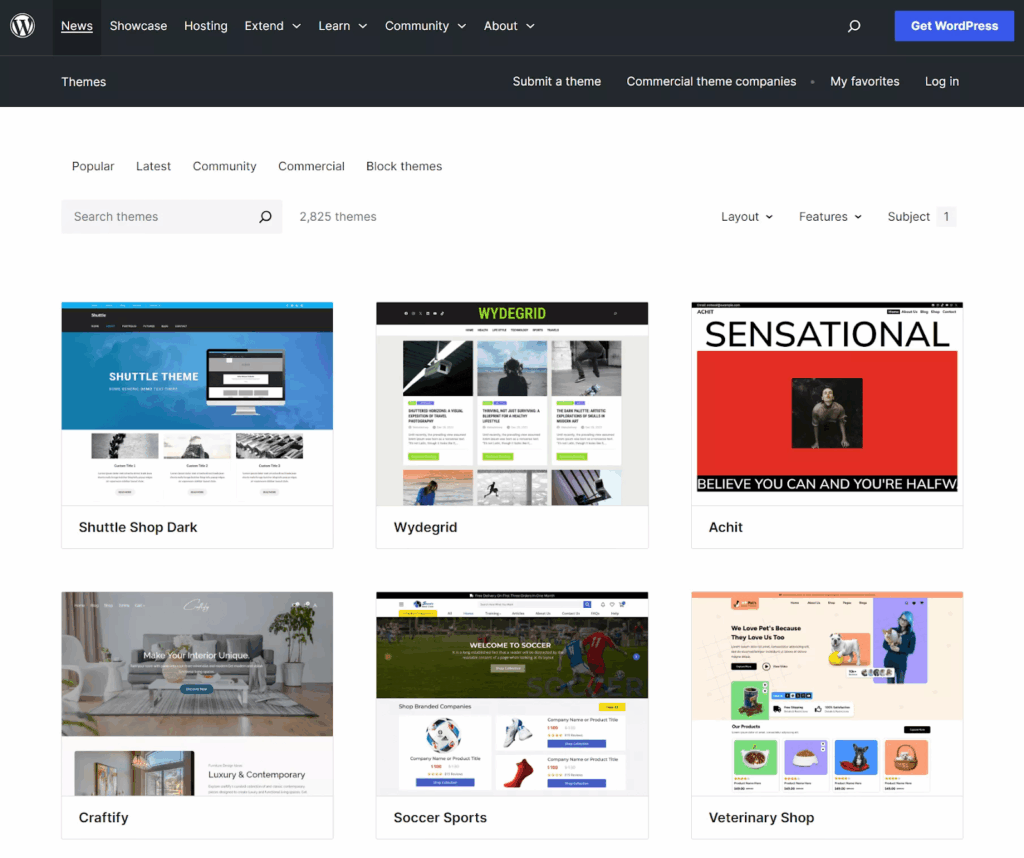
Open-source flexibility:
- WordPress offers virtually unlimited customization potential due to its open-source nature.
Full design control:
You can modify every aspect of your store’s design through:
- Themes
- Custom code
- Plugins
Theme variety:
- Thousands of free themes are available in the WordPress Theme Directory
- Premium marketplaces offer advanced themes with built-in customization panels
User-friendly layout creation:
- The block editor (Gutenberg) allows users to build custom layouts without coding
Developer-level customization:
- Advanced users can utilize PHP, CSS, and JavaScript
- Hooks and filters allow modification of core functionality on both front and back end
Shopify
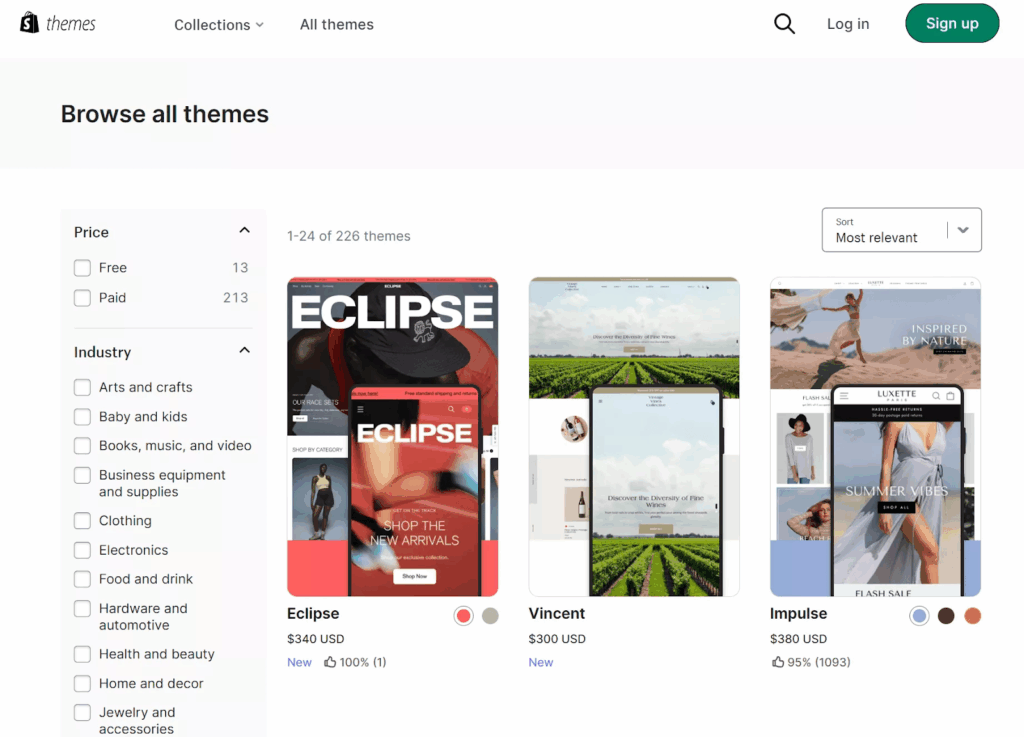
Structured customization:
- Shopify provides a more streamlined and guided approach to customization.
Official theme selection:
- Offers around 100 official themes (free and premium)
- All themes are specifically designed for e-commerce
Built-in e-commerce features:
- Includes features like product quick-view, mobile optimization, and customizable sections
Theme code editing:
- Users can edit HTML and CSS directly through the built-in theme code editor
Liquid templating language:
- Shopify uses Liquid, its own templating language, which may add complexity for developers unfamiliar with it
E-Commerce Features & Tools
When choosing between Shopify and WordPress for your online store, the available e-commerce features and tools play a critical role. From inventory management and payment processing to marketing automation and analytics, these tools determine how efficiently you can run your business.
Shopify
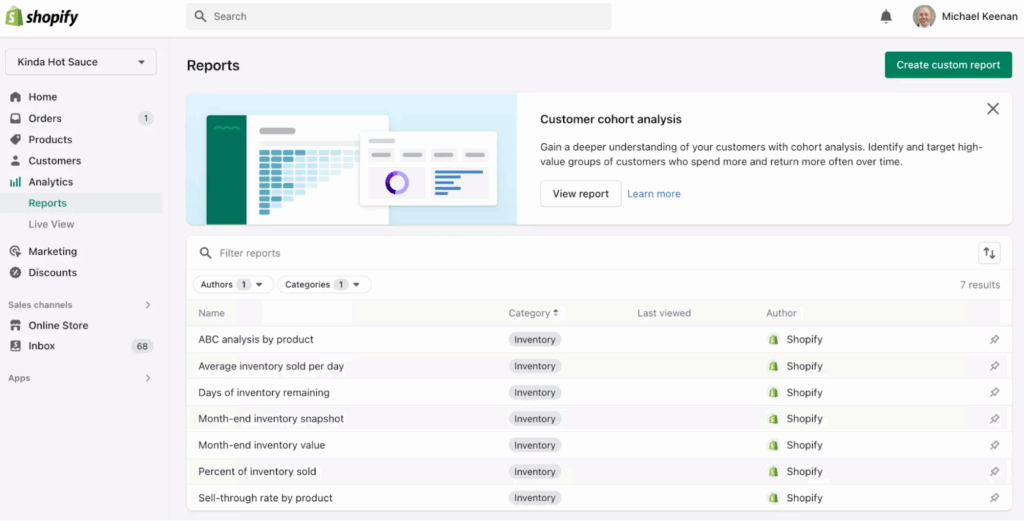
Built-in Tools for Selling:
- Shopify includes everything needed to launch an online store right out of the box
- No need for additional third-party plugins to get started
Product & Inventory Management
- Built-in product listing and categorization tools
- Inventory tracking with stock-level alerts
Shipping & Taxes
- Automated shipping rate calculations based on location and method
- Integrated tax compliance tools to manage regional tax rules
Cart & Checkout Features
- Abandoned cart recovery via Shopify Email
- Secure, streamlined checkout process
- Built-in discount code creation and management
Analytics & Reporting
- Access to professional reports
- Track sales performance, customer activity, and traffic insights
Payment Processing & Security
- Shopify manages payment gateways and processing
- Secure transactions with built-in SSL
- Supports multiple payment options globally
WordPress

Platform Flexibility
- WordPress supports multiple e-commerce platforms such as WooCommerce, OpenCart, and BigCommerce for WordPress, each offering a different set of features and customization options.
WooCommerce: The Most Popular Option
- WooCommerce is the most widely used e-commerce plugin for WordPress, known for its seamless integration and robust core functionality.
Product Management
- WooCommerce allows extensive control over product types, categories, inventory, pricing, and variations—making it easy to manage both simple and complex product catalogs.
Payment and Checkout Options
- WooCommerce supports numerous payment gateways out of the box (e.g., Stripe, PayPal), with additional options available via plugins. The checkout experience is fully customizable.
Shipping and Tax Tools
- Built-in shipping options include flat rate, local pickup, and real-time shipping calculators. Tax settings support regional rules and automatic calculations based on customer location.
Extending Functionality with Plugins
WooCommerce’s modular design allows you to expand your store’s capabilities by adding plugins for:
- Subscriptions
- Bookings and appointments
- Memberships
- Advanced analytics and marketing tools
SEO & Marketing Capabilities
A strong online presence depends not just on having a functional store, but also on how well it’s marketed and discovered by potential customers. Search engine optimization (SEO) and marketing tools play a crucial role in driving traffic, improving visibility, and boosting sales.
WordPress
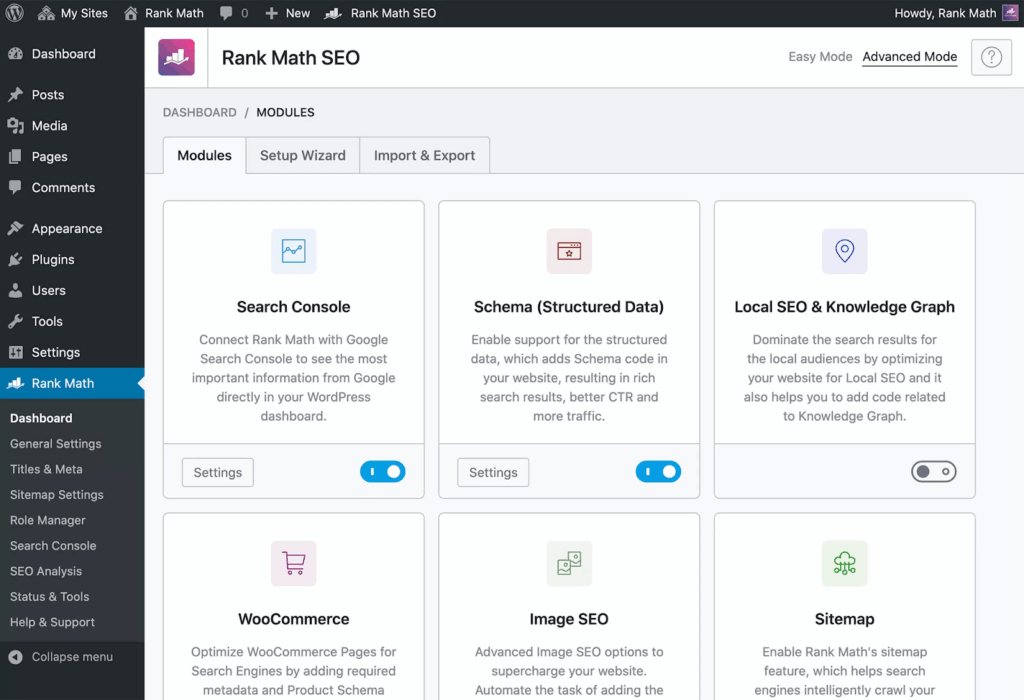
WordPress has SEO features for permalinks and pings, and a standard clean code structure. Additional plugins like Yoast SEO and Rank Math enable advanced optimization control over meta tags, sitemaps, and technical SEO elements.
With an SEO plugin, you can gain access to these elements:
- Complete control over URL structures and permalinks
- Advanced meta tag management for titles, descriptions, and social sharing
- XML sitemap generation with customizable priorities
- Schema markup implementation for rich snippets
- Content analysis tools with real-time optimization suggestions
- Automated internal linking suggestions
- Redirect management for handling 404 errors
- Custom breadcrumb navigation control
- Bulk editing capabilities for meta information
WordPress also allows direct access to your .htaccess file and robots.txt, giving developers complete control over technical SEO elements.
Shopify

Shopify provides built-in SEO features as part of its core platform, with several automated optimizations:
- Automatic canonical tags to prevent duplicate content from appearing in search results
- Auto-generated sitemap.xml and robots.txt files
- Automated title tags that include your store name
- Built-in meta description and title tag editing for all content types (products, collections, blogs, and pages)
- Image alt text editing capabilities
- Social media linking and sharing options built into themes
Migration & Flexibility
Shopify
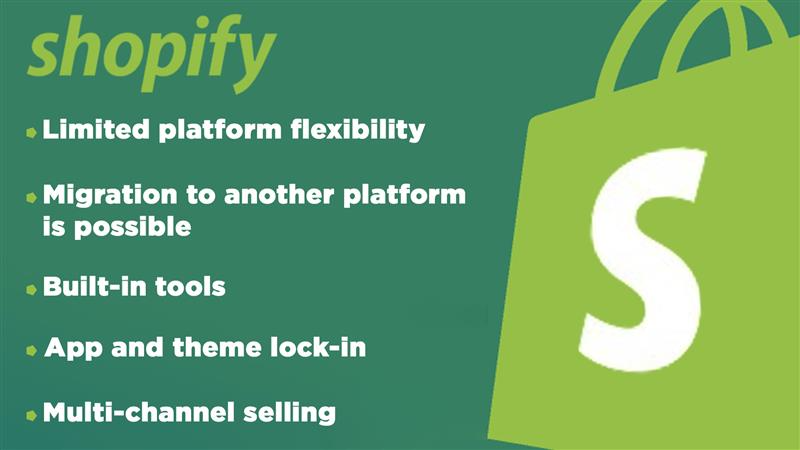
- Limited platform flexibility: Shopify is a closed ecosystem, so you’re tied to its hosting and framework.
- Migration to another platform is possible but may require exporting data (products, customers, orders) manually or using third-party migration tools.
- Built-in tools like the Shopify Import/Export feature help move product and customer data, but content (e.g., blog posts) often need separate handling.
- App and theme lock-in: Customizations made using Shopify apps or themes may not transfer seamlessly to other platforms.
- Multi-channel selling is a strong point—Shopify integrates easily with Amazon, Facebook, Instagram, and other marketplaces.
WordPress
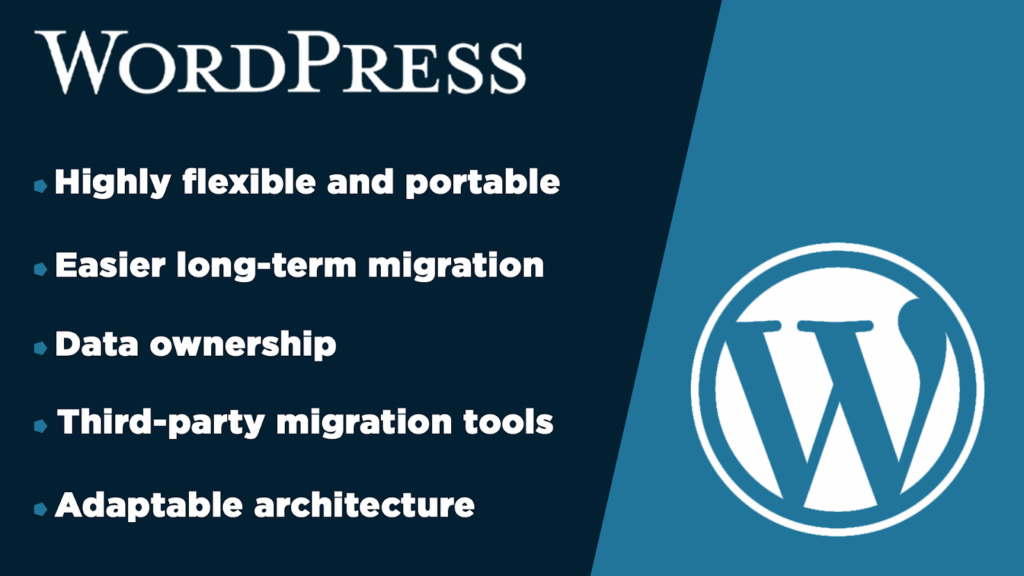
- Highly flexible and portable: As an open-source platform, WordPress allows full control over hosting, data, and codebase.
- Easier long-term migration: You can move your site between hosts or even to different CMSs with fewer restrictions.
- Data ownership: You have full access to all your store data (products, orders, customer info, etc.) at all times.
- Third-party migration tools: Plugins like Cart2Cart or WP All Import simplify moving to or from WordPress.
- Adaptable architecture: Easily expand your store or integrate new features via plugins or custom development.
Conclusion
Shopify provides a fully hosted e-commerce platform with enterprise-grade security, 24/7 support, and transparent, tiered pricing—ideal for businesses seeking rapid deployment and minimal technical overhead.
By contrast, WordPress paired with WooCommerce offers unparalleled customization and cost flexibility but requires you to manage hosting, updates, and security in-house.
Opt for Shopify when you value simplicity, speed to market, and worry-free scalability; choose WooCommerce if deep control, budget optimization, and available technical resources are your top priorities.



